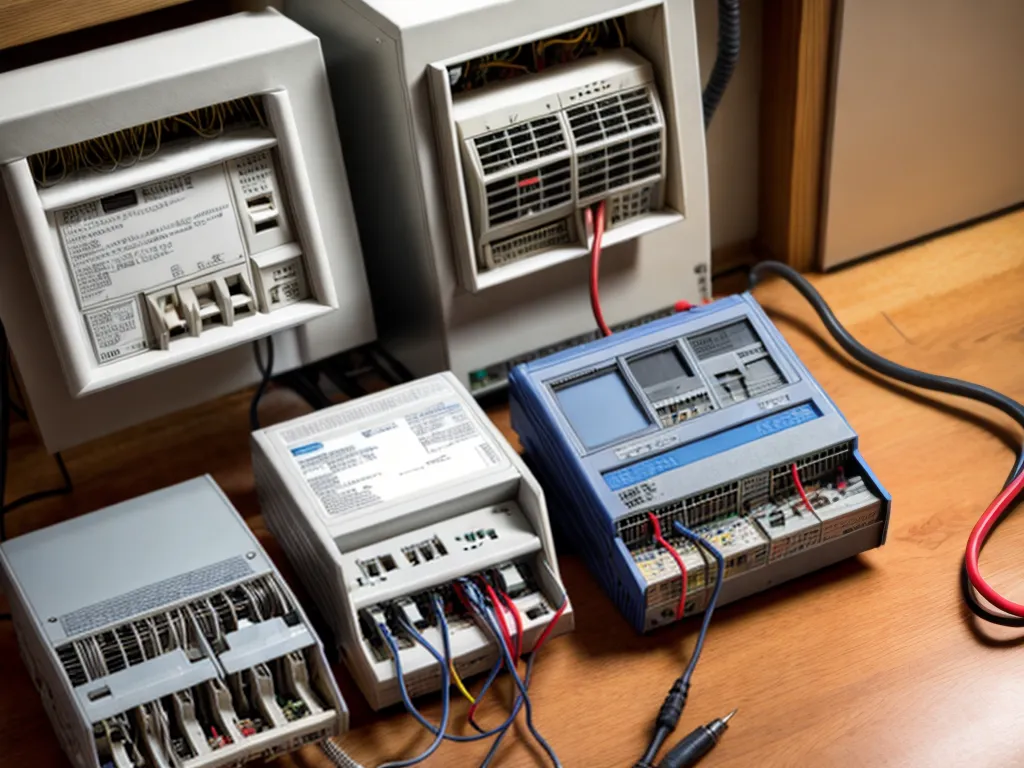
As homes and buildings age, the electrical systems within them can become outdated and even dangerous. Upgrading obsolete electrical systems can be expensive, but there are ways to reduce costs while still ensuring safety. Here's an in-depth look at how to save money when replacing outdated electrical components.
Understanding Obsolete Electrical Systems
Many homes built before the 1960s contain obsolete electrical systems that do not meet modern safety standards. These older systems were only designed to handle small household electrical loads, not the proliferation of computers, large appliances, and electronics found in homes today. As a result, continuing to use outdated electrical systems can pose fire and shock hazards.
Some signs your electrical system may be obsolete include:
- Frequent tripped breakers or blown fuses - Indicates the system is overloaded and cannot handle the electrical draw safely.
- Not enough outlets - Older homes often have too few outlets, requiring extension cords and power strips that overload circuits.
- Exposed, degraded wiring with cloth insulation - This type of wiring is highly dangerous and prone to arcing faults.
- Two-prong ungrounded outlets - These do not safely protect against shocks.
- Fuses instead of circuit breakers - Fuse boxes are obsolete compared to modern circuit breaker panels.
If your home has any of these red flags, it likely contains outdated electrical components that need replacement for safety.
Dangers of Using Obsolete Electrical Systems
Continuing to use electrical systems with obsolete components comes with serious risks:
- Electrical fires - Overloaded, damaged, or faulty wiring can overheat and ignite fires. Electrical fires account for over 40,000 house fires per year in the U.S.
- Shocks and electrocution - Damaged or ungrounded wiring removes protections from shocks and can lead to injury or even death.
- Equipment damage - Outdated wiring cannot safely support modern high-power devices, leading to potential damage and malfunction.
- Inability to add new wiring - Obsolete systems make it hard or impossible to add new wiring to support additional devices and appliances.
For your safety and peace of mind, it is crucial to update obsolete electrical components rather than continuing to use outdated and potentially dangerous systems in your home.
Prioritizing Critical Upgrades
Replacing an entire obsolete electrical system at once can be prohibitively expensive. A smarter approach is to prioritize critical upgrades first while making plans to complete a full rewiring project over time.
The most important upgrades to make first include:
- Service panel replacement - The main service panel should be replaced first, as continuing to use an old fuse box is extremely hazardous. Upgrading to a modern circuit breaker panel is essential.
- Improving wiring in frequently used areas - Focus next on areas like the kitchen and bedrooms, where outdated wiring sees heavy use daily. This reduces the risk of overloads and fires.
- GFCI outlets near water sources - Outlets near sinks or other water sources should be upgraded to GFCI outlets to prevent shocks.
- AFCI breakers - Installing AFCI breakers in your new electrical panel helps protect against dangerous arc faults in wiring.
Making these critical upgrades first allows you to modernize the most potentially hazardous aspects of your electrical system while spreading costs over time.
Cost-Saving Strategies
Upgrading obsolete electrical components while sticking to a budget is achievable with the right cost-cutting strategies:
- Take advantage of rebates and incentives - Many utility companies offer rebates to homeowners who upgrade electrical panels, wiring, and outlets to increase safety and efficiency. These can offset 25% or more of project costs.
- Use DIY options when possible - For simple upgrades like installing GFCI outlets and AFCI breakers, consider DIY to save on labor costs. Leave complex wiring projects to professionals though.
- Compare contractor bids - Get quotes from at least 3 licensed electricians to find the best value. Look for contractors willing to spread projects over phases to increase affordability.
- Upgrade wiring incrementally - Focus first on the most essential wiring upgrades, then tackle secondary rooms over time as budget allows.
- Purchase components ahead of time - Buying items like breakers and outlet covers in bulk online can lead to significant savings over having your electrician supply them.
Taking a phased approach and utilizing cost-saving techniques allows you to achieve a fully modernized, safe electrical system over time without breaking the bank.
Ensuring Electrical Safety
Attempting to save money should never come at the cost of safety when upgrading home electrical systems. To guarantee your upgrade project is done safely:
- Hire a licensed, insured electrician for complex work - Only qualified professionals should handle main service panels, wiring, and large appliances.
- Obtain proper permits - Permits are required for most major electrical work, and help ensure compliance with local codes.
- Use fire-rated components - Choose electrical boxes, wiring, and devices with fire-rated UL listings for optimal safety.
- Install hardwired smoke detectors - Upgrading to hardwired smoke detectors provides critical fire protection.
- Label all circuits - Clearly labeling each circuit in the upgraded electrical panel makes troubleshooting safer and easier.
Investing in essential safety measures adds to project costs but gives invaluable peace of mind by preventing electrical fires and injuries.
Replacing obsolete electrical components in your home may require a significant investment, but there are many ways to reduce costs without sacrificing safety. By prioritizing critical upgrades first and leveraging available incentives and budget-friendly installation options, you can achieve a modern, safe electrical system over time. Paying close attention to fire and shock safety at every step is crucial when undertaking these important upgrades as well. With the right plan and safe work practices, you can save money while also gaining the safety benefits of a reliable, updated electrical system.